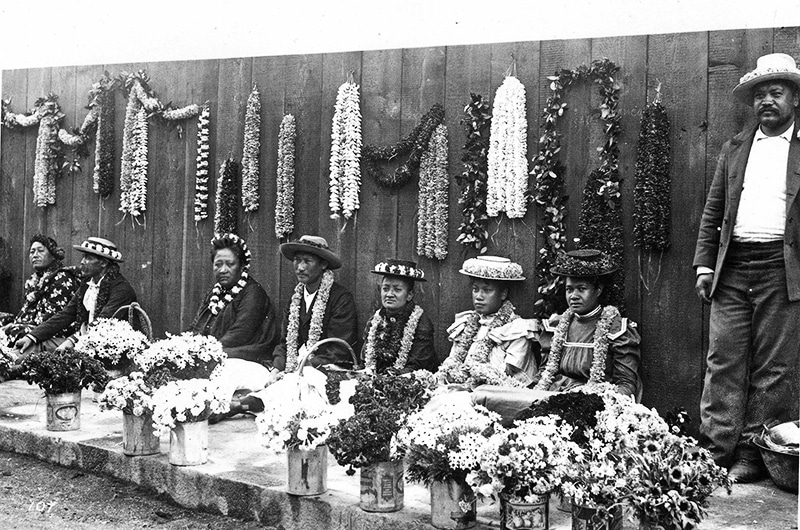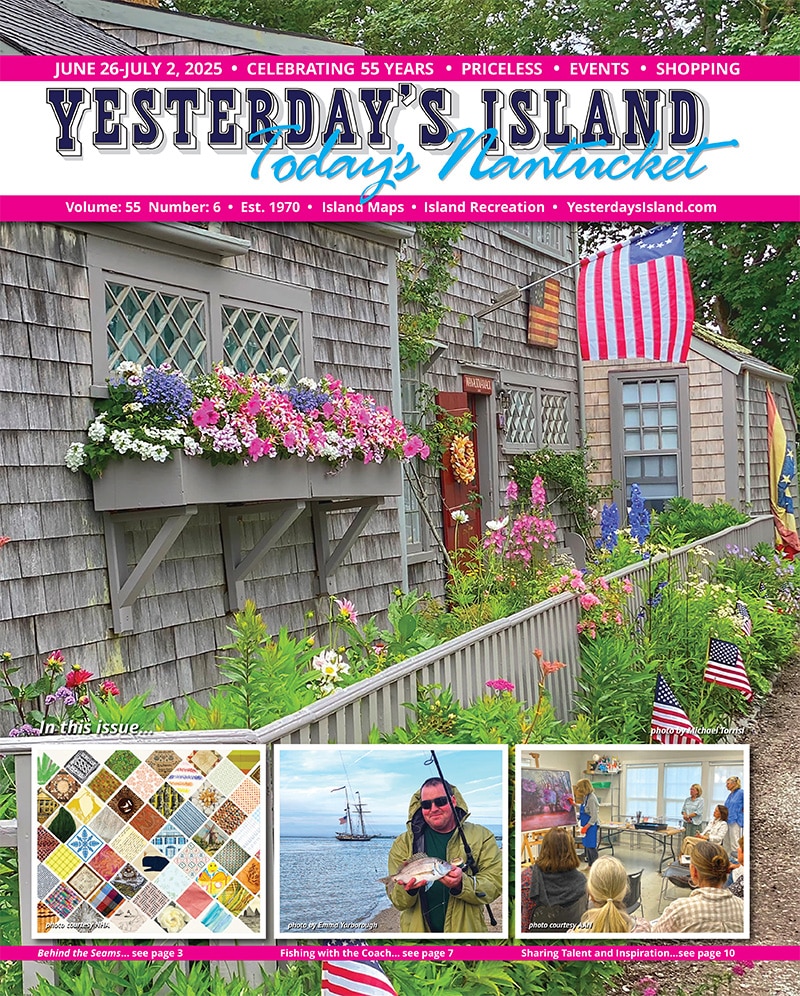~ by Amy Jenness ~

In 1778 Captain James Cook and his crew were the first westerners to visit the islands of Hawaii, and they found there a rich Polynesian culture built over many centuries. But things did not go well for Cook, who was killed by the locals after he tried to take an island chief hostage. The captain’s journals were published posthumously in 1784, and soon Europe and America learned of these remote tropical islands and others sailed for Hawaii. Traders headed to Canton, China with furs stopped there for provisions and developed a brisk business trading Hawaiian sandalwood in China. The islands later became a major port for Nantucket whaleships.
Captain Cook irrevocably changed the sovereign island nation. He introduced goats and pigs as well as seeds for melons, squash, and onions. He named the archipelago the Sandwich Islands in honor of his patron the 4th Earl of Sandwich, a name that stuck until the 1840s. By the 1790s, Hawaii was a major crossroads in the South Pacific, hosting ship crews and immigrants from China, America, Russia, and Europe.
In 1819 Edmund Gardner, in command of a New Bedford ship, and Elisha Folger, in command of a Newburyport ship, were the first whalers to anchor in a bay offshore. The next year Joseph Allen, in command of a Nantucket ship, entered Honolulu Bay. In short order, other whaleships followed and their influence lead to bustling port communities in Honolulu on Oahu, Lahaina on Maui and Hilo on Hawaii.
The first whaleship ventured into the Pacific Ocean at the turn of the 19th century. They initially hunted sperm whales off the coast of Chile and Peru, but had to contend with hostility from the Spaniards who ruled those countries. By the 1820s, whalers sailed farther into the Pacific Ocean and found a welcoming reception in the Hawaiian Islands. Despite their rocky start with Captain Cook, Hawaiian kings agreed to do business with foreign whaleships headed for Japan, South Pacific, and Arctic that needed to provision their ships, hire local sailors, or send their cargoes home. In 1824, 100 whaleships visited the islands. By 1846, 736 stopped there, most of them from Nantucket or New Bedford.
Nantucket captain Valentine Starbuck commanded the English whaleship L’Aigle and arrived in Hawaii in 1822. Starbuck became friendly with King Kamehameha who told him of his great respect for, and curiosity about, England’s King George. Captain Starbuck was eager to connect the two kings and secure Hawaii for the English. He convinced King Kamehameha and his queen to travel to London, and they arrived in May of 1824. Just when it appeared that Starbuck had orchestrated the British taking control of Hawaii, King Kamehameha and his wife became ill. The queen died of the measles on July 2 and the king died six days later.
Their bodies were returned home to be buried and Hawaii never became British. In addition, the owners of the L’Aigle sued Captain Starbuck for failing to complete the whaling voyage he had signed on for.
When the sandalwood industry crashed in 1830 due to depletion, whaling took over as Hawaii’s major economic driver for the next 20 years. Locals there grew potatoes and sugar cane for the westerners. They slaughtered wild cattle to provide them meat. Honolulu installed its first water pipes to meet a large demand for fresh water. Sailmakers, blacksmiths, carpenters, laundries, bakeries, shops, and boarding houses all took root because of the whaling industry, and many of the companies that would later dominate the economy got their start as merchants or suppliers to whalers. In the 1820s an American consul was established there to ensure equitable treatment of whalemen and protect New England’s interests. Americans built a hospital in Lahaina to treat sailors. And American missionaries, who arrived in the 1820s, created the first written Hawaiian language and imported the first printing press.
This dynamic mix of cultures and values created conflict. Westerners exposed the locals to diseases that killed them in alarming numbers. Locals opened taverns and brothels to serve the maritime trade. Missionaries worked hard to change native customs and shut down illicit sailor trade. In 1852, 4,000 whaleship sailors rioted when a drunk crewman was killed in jail. In another conflict, a whaleship fired a cannon at the home of a missionary trying to outlaw taverns and prostitution.
For Nantucket whalers, Hawaii also invited safety and rest. Azubah Handy Cash accompanied her husband Captain William Cash on a four year trip aboard the Columbia. The captain left his wife and 10 year old son in Hilo while he hunted whales in the Arctic. While there, 30 year-old Azubah gave birth to a son in 1851. Cash collected his family and went back north to continue the hunt. Azubah kept a journal and while hunting off the coasts of Siberia and Japan in 1852, wrote:
“. . . Capt. Pierce of the Ship Kutusoff came on board while Capt. F.’s wife were here and he met with a great misfortune the night before. His boats were fast to two right whales, cow and calf, and had 3 boats stove very bad, and one boatsteerer killed (they did not get him) and his carpenter hurt very bad, and one other man. He looked very sad and it made us all feel so. He left his wife and little girl at Hilo (a place dear to my heart being the birthplace of my little Murray). He was glad she was not with him up here, for it was bad enough to be here himself. It must be very discouraging to shipmates.”
Amy Jenness is author of On This Day in Nantucket History


